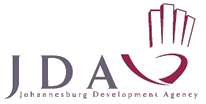New city-wide transit construction is improving access to employment opportunities, securing residents’ safety, and linking communities across Johannesburg.
With the expansion of the Rea Vaya Bus Rapid Transit (BRT) system, Johannesburg’s citizens will gain access to the many employment opportunities the city has to offer. This was the message Johannesburg Executive Mayor Parks Tau passed on to hundreds of attendees at the Region E Imbizo held at Altrac Stadium in Alexandra on Tuesday, 22 April.
The event focused on transportation and mobility, and how the City is looking to open up what it calls Johannesburg’s Corridors of Freedom.
The City is providing access to employment opportunities by expanding the Rea Vaya BRT system between Sandton and Alexandra Township; some 10 000 commuters pass between the areas every day. The construction project, Rea Vaya Phase 1C, is already under way.
Tau said the BRT system would become the backbone of the Corridors of Freedom and its expansion would open up opportunities for all citizens. He said, “Apartheid not only deprived people of opportunities but made them live in areas that do not have access to them. We believe these interventions will address the key problems around transportation so that we have the ability to access different opportunities.”
REA VAYA PHASE 1C
According to Rea Vaya infrastructure project manager, Charles Block, the route between Sandton and Alexandra will include 10 bus stops and an interchange – as big as 10 Rea Vaya stations – just off Louis Botha Avenue. It will serve commuters from Sandton, Alexandra, Randburg and Sunninghill.
Commuters from Ekurhuleni will also be accommodated as Rea Vaya is working in conjunction with that municipality’s BRT system. “We are working with Ekurhuleni because they are also building their own BRT system; so the two systems will be integrated,” said Block.
Katherine Street will be widened to four lanes at the bridge that overlooks the Jukskei River in Marlboro. Block said this adjustment would help support the volume of traffic expected on that street.
From there onwards, a five kilometre bridge will be built over the M1 to lead to No 3 Square in Alexandra. This bridge will accommodate the BRT system, and cyclists and pedestrians. Tau said the bridge would represent the “concept of a complete street, which fulfils the needs of all citizens”.
“When I talk about complete streets, I’m talking about streets that are accessible, that can be used for walking, for cycling or even for recreational purposes.”
The route will also include:
- 16km of dedicated lanes;
- More than 30km of improved pavements and cycling lanes in Alexandra;
- Park-and-ride facilities to reduce traffic congestion;
- A new integrated transport plan fusing Rea Vaya BRT, Metrobus, and minibus taxi transit networks; and
- A new bus depot in Wynberg just off London Road.
The City estimates that 5 700 jobs will be created during the construction phase. When fully operational, the route will offer 1 500 people employment as drivers, marshals, cleaners, security and cashiers.
NEW JUKSKEI BRIDGE OPEN
Earlier in the day, Tau opened a new concrete pedestrian bridge over the Jukskei River in Alexandra.
Christine Walters, member of the mayoral committee for transport, said, “After the floods [in 2011] the metal bridge was washed away and that’s why we needed to build a sustainable bridge.”
The R7.8-million concrete structure now serves residents and schoolchildren in the area, and is high enough to safely cross the river when it floods.
“This bridge is about creating access to communities that were affected by the flooding. These reinforcements reduce impact on communities,” said Tau.

